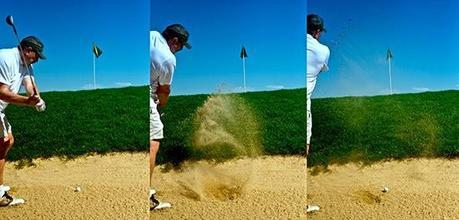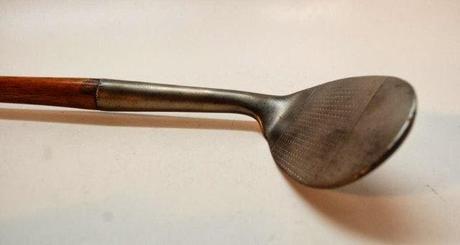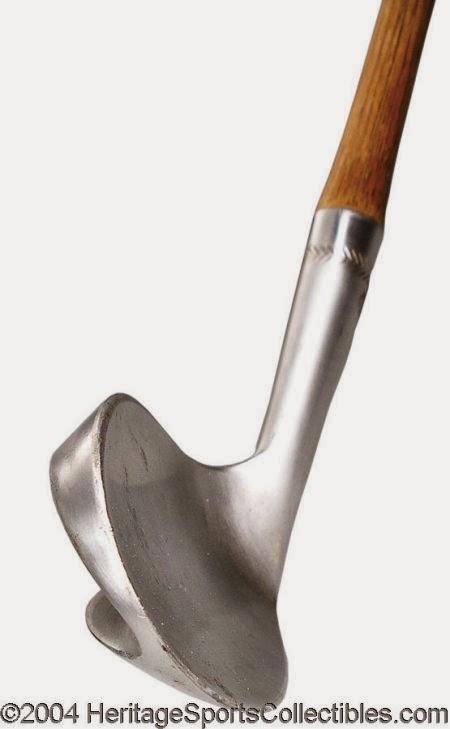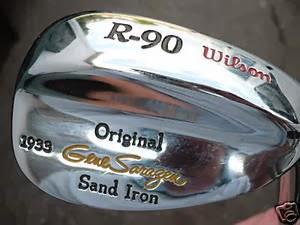 Image courtesy of Zach Dischner
Image courtesy of Zach Dischner
Today bunker shots are considered some of the easiest to play thanks to specially-designed sand wedges, but once upon a time finding your way out of a bunker was one of the trickiest elements of a round of golf.
The modern sand wedge as we know it today is largely credited to Gene Sarazen, who was one of the world’s top players in the 1920s and 30s, and whose specially-designed sand wedge helped him lift the Masters trophy in 1935.
Sand wedges are designed to be used primarily to take shots from sand bunkers, and have the largest amount of “bounce” of all golf clubs. This means that the leading edge of the club is lifted from the ground which prevents the club from getting stuck in surrounding sand or soft ground.
Niblicks
 Before the modern sand wedge was developed, golfers used other clubs known as “Niblicks” or “spoon clubs” to play balls from positions that proved challenging, such as bunkers. The use of Niblicks was documented as far back as 1907, when they were mentioned in an Army and Navy catalog.
Before the modern sand wedge was developed, golfers used other clubs known as “Niblicks” or “spoon clubs” to play balls from positions that proved challenging, such as bunkers. The use of Niblicks was documented as far back as 1907, when they were mentioned in an Army and Navy catalog.
Concave-faced wedge
 Although Gene Sarazen was certainly responsible for shaping the modern sand wedge that caddy’s carry today, he wasn’t the first to design new clubs to help play out of awkward positions.
Although Gene Sarazen was certainly responsible for shaping the modern sand wedge that caddy’s carry today, he wasn’t the first to design new clubs to help play out of awkward positions.
Bobby Jones, an American amateur golfer and lawyer, also designed a club to help golfers out of the sand, with a concave face. The problem with this design was that it actually touched the ball twice during a swing, so was banned by the United States Golf Association & R&A in 1931
Gene Sarazen
 It is said that Gene Sarazen first began developing prototypes for the sand wedge after an aeroplane flight inspired the idea. He noticed wing flaps which lowered on takeoff to aid lift, and realised that the same principle could be applied to golf clubs to help him out of sand bunkers.
It is said that Gene Sarazen first began developing prototypes for the sand wedge after an aeroplane flight inspired the idea. He noticed wing flaps which lowered on takeoff to aid lift, and realised that the same principle could be applied to golf clubs to help him out of sand bunkers. He created his first prototype in 1931, by soldering additional lead to the sole of a Niblick and adjusting its angle to around 10 degrees. He created a club with a straight face and added additional lead to the face in order to conform to the regulations. Next the designs were sent to Wilson to be designed and manufactured.
The sand wedge as we know it today
As the purpose of the sand wedge is to effectively “flick” a ball from where it is nestled in a sand bunker, the club has to feature an angled loft. The loft of the modern day sand wedge stands at around 56 degrees.
To incorporate this loft, the back of the club is lower than the leading edge (flange), therefore meaning that the lower back hits the surrounding sand before the ball, effectively making the sand “explode” and launching the ball from the bunker. It is this design that increases the level of bounce that the club provides – this has also meant that some golfers prefer to utilise their sand wedge for wet or soft ground as it provides a cleaner shot.
To provide the significant force required behind a ball when attempting a sand shot, the sand wedge has to have a substantial amount of weight behind it. Due to this, the sand wedge is now one of the heaviest clubs found in golf bags, weighing in at around 1.1kg.
So next time you are stuck in a bunker and the trusty sand wedge helps you out of trouble, spare a thought for the pioneer golfers who made their own clubs and helped develop Niblicks into the modern sand wedge we use today.
- - - - - - - - - -
This article was written by Maria Bain for inclusion in the Eat Sleep Golf - Evolution of Golf series. Maria is a freelance travel writer, covering a range of topics including adventure, luxury and golf holidays.

